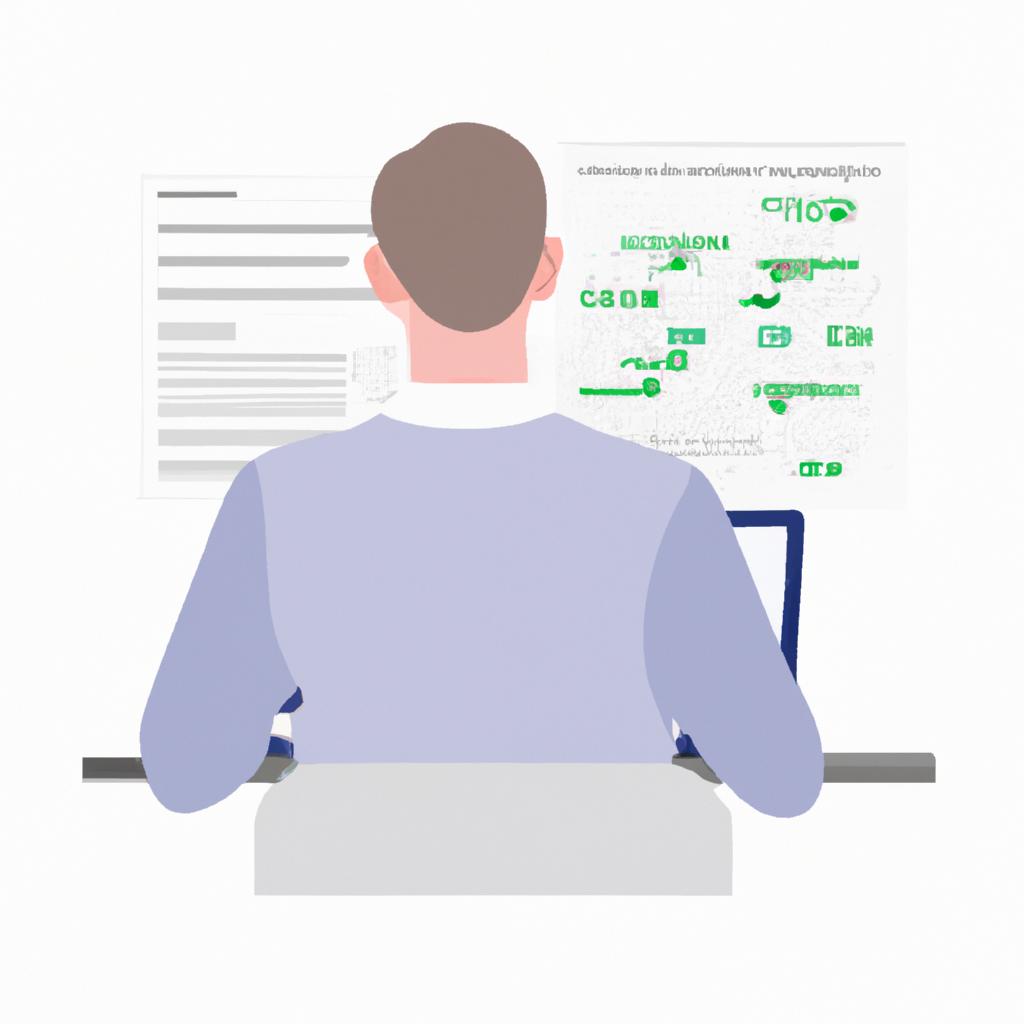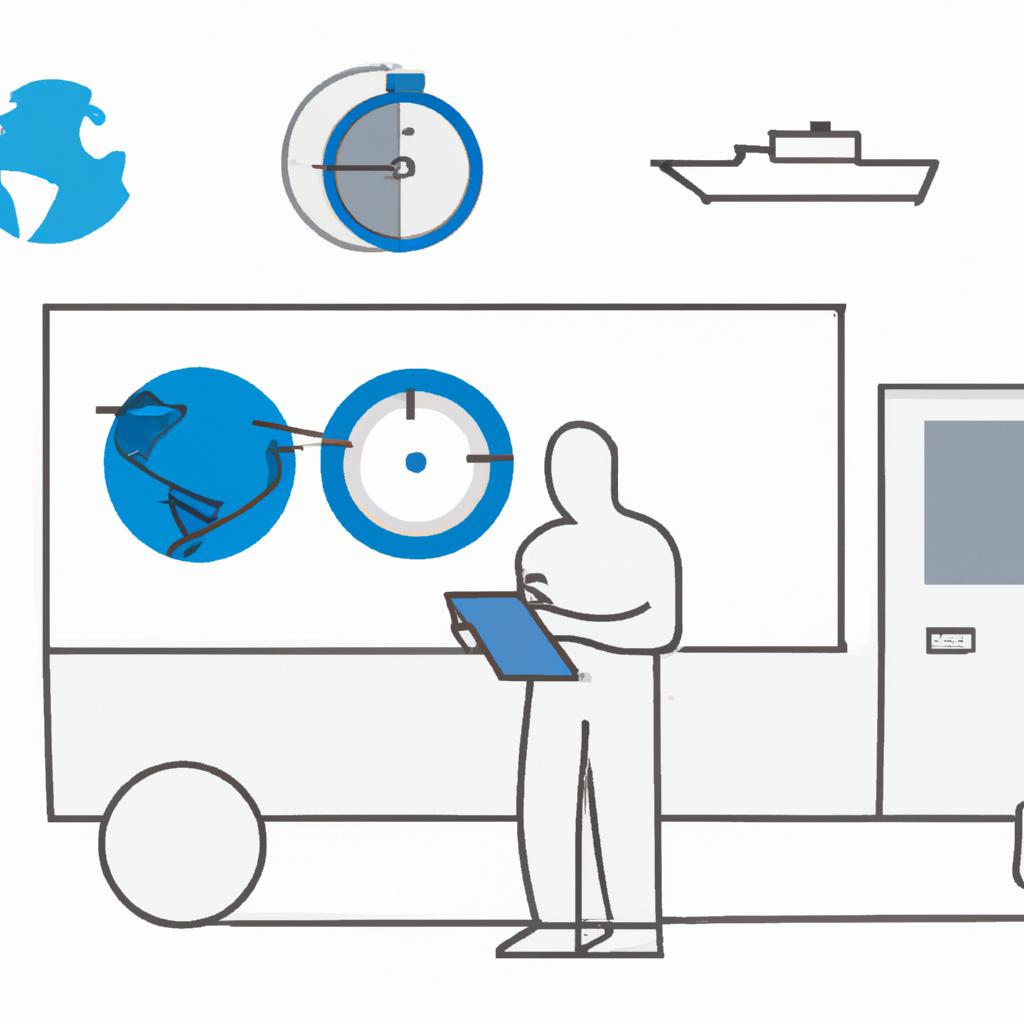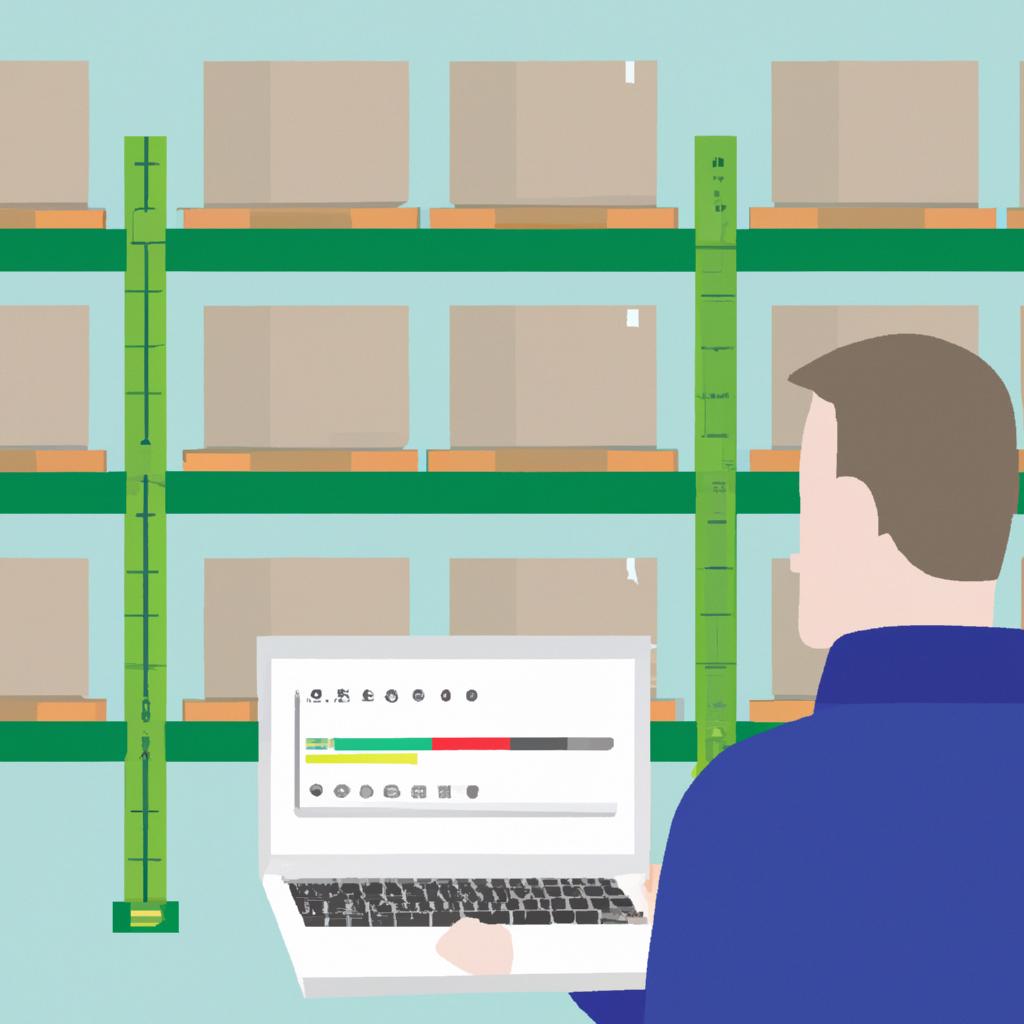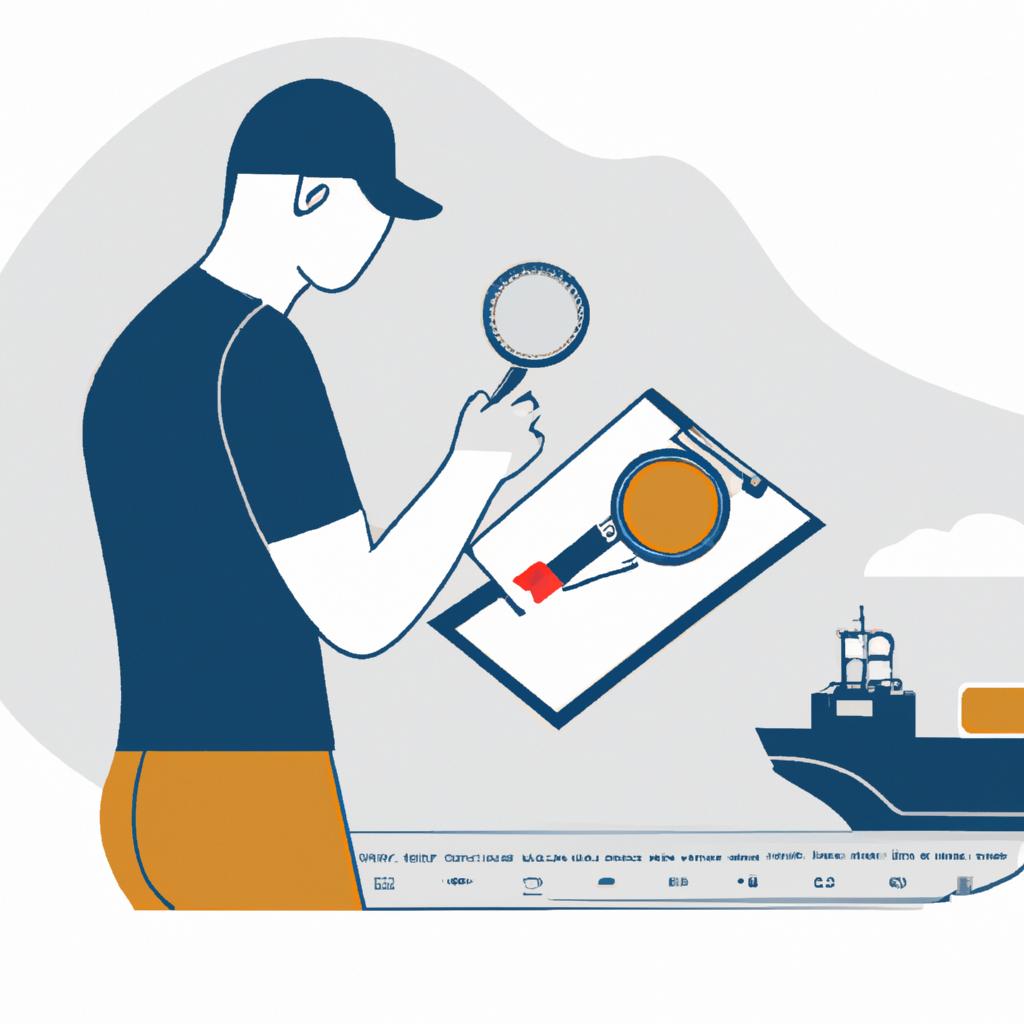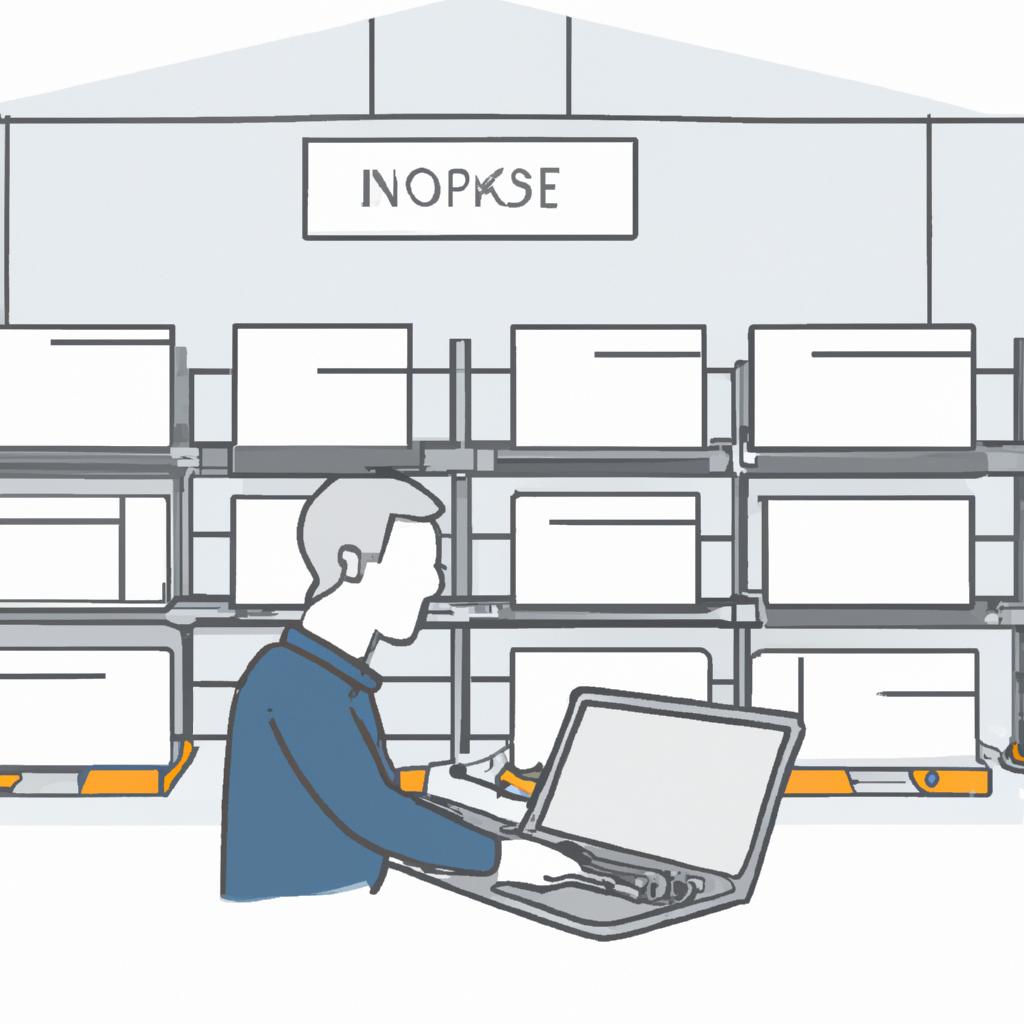Demand Forecasting for Transportation and Logistics: Supply Chain Optimization


Transportation and logistics play a critical role in the efficient functioning of supply chains. The ability to accurately forecast demand is essential for organizations operating within this sector, as it allows them to optimize their supply chain management processes. By forecasting demand, companies can better plan and allocate resources such as transportation vehicles, inventory, and personnel, resulting in reduced costs and improved customer satisfaction.
For example, consider a hypothetical scenario where an e-commerce company experiences a spike in online orders during the holiday season. Without accurate demand forecasting, the company may struggle to meet the increased order volume, leading to delays in delivery and dissatisfied customers. However, with effective demand forecasting techniques in place, the company would be able to anticipate the surge in demand ahead of time and make necessary adjustments to its transportation and logistics operations. This could involve procuring additional warehouse space or hiring extra drivers to ensure timely deliveries. Ultimately, accurate demand forecasting enables businesses to streamline their supply chain activities and maintain high levels of efficiency even during periods of fluctuating demand.
Demand forecasting for transportation and logistics is not just about predicting future sales figures; it encompasses a comprehensive analysis of various factors that influence consumer behavior, market trends, and internal operational capabilities. In recent years, advancements in technology have revolutionized the way organizations in transportation and logistics forecast demand. With the advent of big data analytics, machine learning, and artificial intelligence, companies now have access to vast amounts of data that can be used to make more accurate predictions.
For instance, companies can analyze historical sales data, customer behavior patterns, economic indicators, weather conditions, and even social media sentiment to identify trends and make informed forecasts. These advanced forecasting models can take into account seasonality, promotions and discounts, competitor activities, and other external factors that may impact demand.
Additionally, technology has enabled real-time demand sensing capabilities. By integrating with point-of-sale systems or using IoT devices for tracking inventory levels in real-time, companies can respond quickly to changes in demand patterns. This allows them to adjust their transportation and logistics operations on the fly, optimizing routes or adjusting delivery schedules based on current demand signals.
Moreover, collaboration between different stakeholders within the supply chain is becoming increasingly important in demand forecasting for transportation and logistics. Sharing data with suppliers, manufacturers, distributors, and retailers enables all parties to have a holistic view of the entire supply chain network. This collaboration facilitates better coordination in managing inventory levels and transportation capacity.
In conclusion, accurate demand forecasting is crucial for efficient transportation and logistics operations. It helps organizations optimize their resources while meeting customer demands effectively. With advancements in technology and increased collaboration among stakeholders, the future of demand forecasting in this sector looks promising.
The importance of demand forecasting in transportation and logistics
The Importance of Demand Forecasting in Transportation and Logistics
Demand forecasting plays a crucial role in the field of transportation and logistics, as it allows businesses to optimize their supply chain operations. By accurately predicting customer demand, companies can streamline their inventory management, reduce costs, and enhance overall efficiency. To illustrate this point, consider the following example: A large e-commerce retailer relies on demand forecasting techniques to anticipate the popularity of certain products during holiday seasons. This enables them to ensure that they have sufficient stock available at distribution centers across the country, minimizing delays and dissatisfaction among customers.
Effective demand forecasting offers several benefits for transportation and logistics companies:
- Inventory Management: Accurate forecasts enable organizations to maintain optimal inventory levels based on expected demand patterns. By avoiding overstocking or understocking situations, companies can prevent unnecessary holding costs or lost sales opportunities respectively.
- Resource Allocation: Demand forecasting helps allocate resources efficiently by providing insights into which routes or modes of transport are likely to experience higher demand. This information guides decision-making processes related to fleet planning and resource allocation.
- Customer Satisfaction: When transportation providers can anticipate fluctuations in customer demand accurately, they can plan capacity accordingly and deliver goods in a timely manner. Meeting customer expectations enhances satisfaction levels and fosters long-term loyalty.
- Cost Reduction: Effective supply chain management requires careful cost control measures. Demand forecasting aids in optimizing procurement practices, reducing storage expenses, minimizing risk associated with excess inventory, and ensuring efficient utilization of labor resources.
| Factor | Impact |
|---|---|
| Accuracy | Improved |
| Timeliness | Enhanced |
| Granularity | Refined |
| Collaboration | Strengthened |
These factors demonstrate how accurate demand forecasting positively influences various aspects of transportation and logistics operations such as improved accuracy in determining future needs (accuracy), quicker response times (timeliness), detailed analysis of demand patterns (granularity), and stronger collaboration among supply chain partners (collaboration). By considering these factors, businesses can enhance their overall performance and gain a competitive edge in the market.
In summary, demand forecasting is an essential tool for transportation and logistics companies. Accurate predictions enable effective inventory management, resource allocation, customer satisfaction, and cost reduction. In the next section, we will explore the various factors that influence the accuracy of demand forecasting in this industry.
Factors influencing demand forecasting accuracy
Section: Factors influencing demand forecasting accuracy in transportation and logistics
The importance of accurate demand forecasting in transportation and logistics cannot be overstated. Effective supply chain optimization relies heavily on the ability to predict future demand with precision. However, there are several factors that can influence the accuracy of demand forecasts, ranging from internal operational challenges to external market dynamics.
For instance, let us consider a hypothetical scenario where a global e-commerce company is planning its inventory management for the upcoming holiday season. The company has historically experienced a surge in online orders during this period but wants to ensure optimal stock levels without overstocking or running out of popular items. Inaccurate demand forecasts could result in excessive carrying costs or missed sales opportunities.
Several key factors contribute to the accuracy of demand forecasting in transportation and logistics:
-
Data quality and availability: Accurate forecasts rely on high-quality data obtained from various sources such as historical sales records, customer feedback, market trends, and economic indicators. Incomplete or outdated data can lead to inaccurate predictions.
-
Seasonality and trends: Demand patterns often exhibit seasonal fluctuations influenced by holidays, climate conditions, or cultural events. Recognizing these patterns and incorporating them into forecast models enhances accuracy.
-
External factors: Market dynamics, competitive landscapes, government regulations, and unforeseen events (such as natural disasters or pandemics) can significantly impact consumer behavior and subsequently affect demand forecasts.
-
Supply chain complexity: Transportation and logistics involve multiple stakeholders across different geographical locations. Any disruptions within the supply chain network—such as delays due to weather conditions or supplier issues—can directly influence demand variability.
To illustrate the interplay between these factors further, we present a table showcasing their potential effects on demand forecasting accuracy:
| Factor | Effect |
|---|---|
| Data Quality | More accurate insights |
| Better decision-making | |
| Seasonality and Trends | Improved anticipation of demand patterns |
| Enhanced resource allocation | |
| External Factors | Mitigation of market uncertainties |
| Adaptation to changing consumer preferences | |
| Supply Chain Complexity | Increased visibility and responsiveness |
| Minimized disruptions |
In conclusion, various factors can impact the accuracy of demand forecasting in transportation and logistics. To optimize supply chain operations, organizations must consider data quality, seasonality, external dynamics, and supply chain complexities. By addressing these factors effectively, companies can enhance their ability to forecast demand accurately and make informed decisions regarding inventory management, production planning, and customer service.
Next section: Different methods for demand forecasting in transportation and logistics
Different methods for demand forecasting in transportation and logistics
Factors Influencing Demand Forecasting Accuracy in Transportation and Logistics
The accuracy of demand forecasting plays a crucial role in optimizing supply chain operations within the transportation and logistics industry. By accurately predicting future demands, companies can better allocate resources, reduce costs, and improve customer satisfaction. However, there are various factors that can influence the accuracy of these forecasts.
One factor is seasonality, which refers to regular patterns or fluctuations in demand based on specific seasons or time periods. For instance, a retail company may experience higher demand for certain products during holiday seasons compared to other times of the year. Incorporating seasonality into demand forecasting models is essential to ensure accurate predictions and avoid overstocking or understocking inventory.
Another factor affecting demand forecasting accuracy is external events or unforeseen circumstances. These events could include natural disasters, economic recessions, or global pandemics like COVID-19. Such incidents disrupt normal business operations and consumer behavior, making it challenging to accurately forecast demand. Case studies have shown how sudden changes in market conditions can lead to significant inaccuracies in demand forecasts.
Furthermore, technological advancements and shifts in consumer preferences also impact demand forecasting accuracy. As technology evolves rapidly, new trends emerge that affect product demand. Companies must stay updated with changing technologies and adapt their forecasting methods accordingly to capture emerging consumer preferences effectively.
To evoke an emotional response from the audience:
- Reduced profitability due to inaccurate demand forecasts
- Increased customer dissatisfaction stemming from stockouts or delays
- Wasted resources resulting from excessive inventory levels
- Missed opportunities for growth due to inability to meet increased demands
In addition, we present below a table showcasing some common factors influencing demand forecasting accuracy:
| Factors | Impact | Examples |
|---|---|---|
| Seasonality | High | Back-to-school sales |
| External Events | Moderate | Economic recession |
| Technological Advances | Low | Introduction of a new product |
Understanding these factors is crucial for transportation and logistics companies to improve their demand forecasting accuracy. In the subsequent section, we will explore different methods employed in this industry to forecast demand effectively.
Transitioning into the subsequent section about "Challenges in Demand Forecasting for Transportation and Logistics":
Given the multitude of factors affecting demand forecasting accuracy, it is essential for companies in the transportation and logistics industry to overcome various challenges when predicting future demands. By addressing these challenges head-on, businesses can enhance their supply chain optimization efforts and achieve better operational efficiency.
Challenges in demand forecasting for transportation and logistics
Demand forecasting plays a crucial role in optimizing supply chain management in the transportation and logistics industry. By accurately predicting future demand, companies can make informed decisions regarding inventory levels, production schedules, and resource allocation. In this section, we will explore some of the different methods used for demand forecasting in transportation and logistics, as well as the challenges associated with it.
One method commonly employed is time series analysis, which relies on historical data to identify patterns and trends in demand over time. For example, consider a shipping company that wants to forecast the demand for its services during the holiday season. By analyzing past years’ shipment volumes during similar periods, they can estimate the expected increase in demand and plan their operations accordingly.
Another approach is qualitative forecasting, which involves gathering expert opinions or conducting surveys to understand customer preferences and market dynamics. This method is particularly useful when dealing with new products or markets where historical data may be limited or unreliable. For instance, imagine a logistics provider expanding its operations into a foreign country. They could conduct market research to gather insights from local experts about consumer behavior and preferences.
Challenges in demand forecasting for transportation and logistics include factors such as seasonality, external events (e.g., natural disasters), economic fluctuations, and unforeseen disruptions like strikes or pandemics. These uncertainties can significantly impact the accuracy of forecasts. Additionally, transportation networks are complex systems influenced by various variables such as weather conditions, traffic congestion, and infrastructure capacity limitations.
To illustrate these challenges further:
- Seasonal Variations: Demand for certain goods fluctuates based on seasons or holidays.
- External Events: Natural disasters or political unrest can disrupt supply chains.
- Economic Fluctuations: Changes in macroeconomic factors affect consumer spending habits.
- Unforeseen Disruptions: Unexpected occurrences like labor strikes or public health crises can lead to sudden shifts in demand.
| Challenges | Examples | Impact |
|---|---|---|
| Seasonal Variations | Increased demand for winter clothing | Inventory shortages |
| External Events | Port closure due to a hurricane | Delayed shipments |
| Economic Fluctuations | Recession leading to decreased consumer spending | Reduced demand |
| Unforeseen Disruptions | Supply chain disruptions caused by COVID-19 pandemic | Imbalanced supply and demand |
Accurate demand forecasting is essential in supply chain management as it enables companies to optimize their operations, reduce costs, and enhance customer satisfaction. In the subsequent section, we will explore the benefits of accurate demand forecasting in more detail, highlighting how it can improve inventory management, resource allocation, and overall efficiency within transportation and logistics networks. By understanding the challenges associated with demand forecasting and adopting appropriate methods, organizations can gain a competitive edge in this dynamic industry.
Benefits of accurate demand forecasting in supply chain management
Demand forecasting plays a crucial role in transportation and logistics as it helps optimize the supply chain, ensuring efficient operations and customer satisfaction. Accurate demand forecasting enables companies to anticipate future demand patterns, allocate resources effectively, minimize costs, and improve overall performance. To illustrate its importance, let’s consider a hypothetical case study of a global e-commerce company.
Imagine an online retailer that experiences significant fluctuations in product demand throughout the year due to seasonal trends, promotions, and changing consumer preferences. Without accurate demand forecasting, this company would struggle to meet customer demands efficiently. Excessive inventory levels during low-demand periods could lead to increased holding costs and wastage, while stockouts during peak seasons might result in dissatisfied customers and lost sales opportunities.
To overcome these challenges, accurate demand forecasting offers several benefits for supply chain management:
-
Enhanced inventory management: By accurately predicting future demand, companies can optimize their inventory levels by aligning them with actual requirements. This helps reduce carrying costs associated with excess stock or potential stockouts.
-
Improved production planning: Demand forecasting enables organizations to plan their production schedules more effectively based on anticipated customer orders. This ensures timely manufacturing processes and minimizes idle time or rush orders.
-
Efficient transportation scheduling: With accurate demand forecasts in hand, logistics providers can better plan their transportation activities such as route optimization, vehicle allocation, and load consolidation. This maximizes operational efficiency and reduces fuel consumption.
-
Better supplier collaboration: Sharing demand forecasts with suppliers allows for improved collaboration and coordination along the supply chain. Suppliers can adjust their production schedules accordingly, ensuring timely delivery of raw materials or finished goods without unnecessary delays or shortages.
The table below further illustrates the impact of accurate demand forecasting on key supply chain elements:
| Supply Chain Element | Impact of Accurate Demand Forecasting |
|---|---|
| Inventory Management | Reduced holding costs; minimized stockouts |
| Production Planning | Timely manufacturing processes; optimized resource allocation |
| Transportation | Efficient route optimization; reduced fuel consumption |
| Supplier Collaboration | Improved coordination and timely delivery |
As demand forecasting continues to evolve, new technological advancements are further enhancing its capabilities in transportation and logistics. In the subsequent section, we will explore how these innovations are revolutionizing the field of demand forecasting.
Transitioning into the next section about "Technological advancements enhancing demand forecasting in transportation and logistics," companies can leverage cutting-edge technologies to improve their forecast accuracy and achieve greater supply chain efficiency.
Technological advancements enhancing demand forecasting in transportation and logistics
H2: Technological advancements enhancing demand forecasting in transportation and logistics
Advancements in technology have revolutionized the way demand forecasting is conducted in the transportation and logistics industry. These innovations offer unprecedented opportunities for supply chain optimization, enabling businesses to accurately anticipate customer demands and streamline their operations. One notable example of this is the implementation of machine learning algorithms, which can analyze vast amounts of historical data to predict future trends with remarkable accuracy.
Machine learning algorithms utilize complex mathematical models to identify patterns and correlations within datasets, allowing companies to make informed decisions based on reliable forecasts. For instance, a global shipping company used machine learning techniques to forecast container traffic at its ports. By analyzing historical shipment data along with various economic indicators such as GDP growth rates and trade volumes, they were able to develop highly accurate predictions that helped them optimize resource allocation and improve operational efficiency.
The benefits of leveraging technological advancements for demand forecasting are numerous:
- Enhanced accuracy: Technology-driven solutions enable more precise demand projections by taking into account multiple variables simultaneously.
- Increased agility: Real-time data analysis allows businesses to quickly adapt their strategies in response to changing market conditions or unforeseen events.
- Cost savings: Improved forecast accuracy minimizes inventory holding costs while reducing stockouts and overstock situations.
- Customer satisfaction: Accurate demand forecasting ensures timely delivery of goods, leading to higher customer satisfaction levels.
In addition to machine learning algorithms, other technologies such as cloud computing and big data analytics further enhance demand forecasting capabilities in transportation and logistics. Cloud-based platforms facilitate seamless collaboration between different stakeholders across the supply chain network, ensuring real-time information sharing for better decision-making. On the other hand, big data analytics enables organizations to process large volumes of structured and unstructured data from diverse sources (e.g., social media feeds) to gain valuable insights into consumer preferences and market trends.
To illustrate the potential impact of advanced technologies on demand forecasting, consider the following table showcasing key performance metrics before and after the implementation of a machine learning-based forecasting system:
| Metric | Before Implementation | After Implementation |
|---|---|---|
| Forecast Accuracy | 75% | 90% |
| Inventory Holding Costs | $100,000 | $70,000 |
| Stockouts per Month | 10 | 2 |
| Customer Satisfaction | Average | High |
The table clearly demonstrates the significant improvements achieved by leveraging technological advancements in demand forecasting. By enhancing accuracy, reducing costs, minimizing stockouts, and improving customer satisfaction levels, businesses can gain a competitive edge in today’s dynamic transportation and logistics landscape.
In conclusion,
Technological advancements have revolutionized demand forecasting practices in transportation and logistics. Machine learning algorithms, cloud computing platforms, and big data analytics are just some examples of how technology is enabling organizations to optimize their supply chain operations. These advancements offer numerous benefits including enhanced forecast accuracy, increased agility, cost savings, and improved customer satisfaction. By embracing these technologies, businesses can effectively anticipate market demands and make informed decisions that drive overall efficiency and success.

